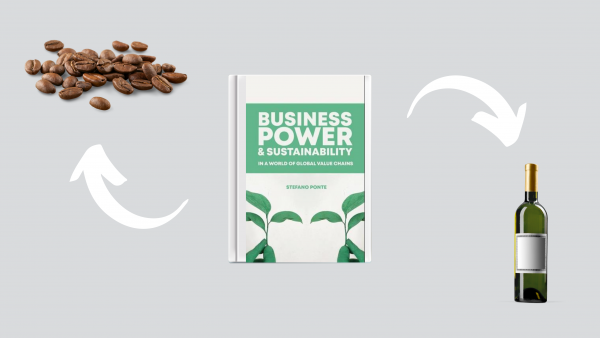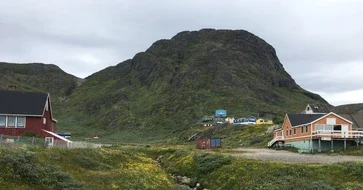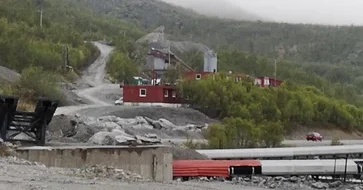By Eirik Veggeberg, Izabela Delabre, and Kristjan Jespersen
The private sector is becoming increasingly vocal in its efforts to reduce deforestation. The last decade has seen a number of major firms making zero-deforestation commitments (ZDCs); pledging to eliminate deforestation in their supply chains, including Nestlé, Cargill, Unilever and Mondelez International. The exact contents of ZDCs vary, from strict zero gross deforestation commitments as implemented by Nestlé, to the more flexible zero net deforestation commitments of Unilever. Many corporations further include policies for social sustainability, such as labour standards (Mondelez, Nestlé), land rights (Nestlé, Unilever) and community consultation and inclusion (Cargill, Unilever). Due in part to their recency, our knowledge on the topic of ZDCs is limited, and there is much to learn about their effects on both forests and people.
What do we know about ZDCs?
The private sector deforestation movement started gaining traction following the ‘success story’ of the Brazilian Soy Moratorium, to which significant deforestation reductions were attributed. However, recent developments suggest that the intervention merely displaced the environmental destruction to the Cerrado savanna, with subsequent environmental costs potentially outweighing the conservation value of the initial deforestation reduction. Similar findings elsewhere induce scepticism about the capacity of supply chain initiatives to give rise to positive change. Despite this, ZDCs are perceived favourably by scholars and environmental groups alike – encouraged as being a (small) step in the right direction.
The efficacy of ZDCs in reducing deforestation is widely examined in academic research, however, little is known about the impacts of ZDCs on local income and livelihoods. This is an important gap in our understanding given the prevalence of ZDCs, and the potential challenges and opportunities they foster for more sustainable and equitable environmental governance. Without more scholarship examining the capacity of zero deforestation pledges to drive positive change and mitigate social harm, there is a danger that they may fail to address the complex problem of deforestation, marginalise communities, and delegitimise other forms of governance that could lead to more positive outcomes. This article expresses numerous concerns about the impacts ZDCs may have on local income and livelihoods.
Selection biases
Firstly, there is a risk that the producers participating in ZDCs are the “low-hanging fruit”. This is prevalent in the adoption of certification schemes and sustainability standards, where participation has been found highly biased toward producers who are already compliant, or close to complying due to prior deforestation, as well as those sufficiently wealthy to afford the price of adoption and implementation. Biases in ZDC participation could contribute to worsening existing inequalities, excluding poorer farmers and entrenching the position of wealthier ones.
While ZDC implementation strategies greatly vary, the exclusion of non-compliant actors is not rare – Nestlé openly commits to such practices. This may be perceived as a sign of loyalty to sustainability, however, paired with selection biases found in other sustainability schemes and initiatives, it anchors the fear that the implementation of ZDC could aggravate local income inequalities and harm poorer stakeholders; perversely rewarding farmers who have obtained land through past deforestation, whilst punishing those who have not.
The price of sustainability
Secondly, for the implementation of ZDC to be considered sustainable and equitable, it is imperative that adequate cost-sharing processes are implemented within supply chains. Learning from the oil palm sector, it is likely that farmers will be held disproportionately responsible for ensuring sustainable production. Farmers implementing ZDC risk losing out on income as buyers exhibit little willingness to compensate producers for operating sustainably. This fear was reiterated by interviewees working on ZDC implementation, as the majority felt corporations were unwilling to pay the price of their sustainability initiatives. A consulted economist further suggested that local suppliers may be caught in a poverty trap as a result of ZDCs restricting them from expanding their agricultural frontier. Businesses’ reluctance to pay for the implementation of sustainable practices risks the income and livelihoods of local actors – potentially encouraging the illegal encroachment of forests.
Interviews with sustainability experts shed light on further negative impacts supply chain sustainability initiatives may have on local suppliers. One interviewee spoke of an indigenous community settled in the Peruvian Amazon that had developed good contact with local NGOs as well as international corporations. The interviewee described them as skilled at diversifying their sources of income: cocoa, timber – even starting to venture into tourism. However, when the pandemic hit, the community was one of the first to request emergency food supplies. The indigenous community had been left exposed in times of crisis in part due to specialisation and involvement with the private sector, which eroded their resilience. Such scenarios evince that still very little is known of the wider and longer-term social impacts of private sector sustainability governance through ZDC implementation. Similarly, based on field research from the Peruvian Amazon, one consultant worried that farmers who swap their crop out for the one pushed by initiatives may actually see their income drop, as a lack of experience with the crop leaves them more vulnerable to potential challenges such as pests and growth issues related to poor land suitability.
What to do?
There are numerous ways in which businesses could adapt their initiatives and implementation strategies to minimise the risks discussed above. Firstly, thorough jurisdictional approaches could help avert some of the potential dangers faced by local communities as a result of ZDC implementation. Incorporating regional governments, NGOs as well as local actors and communities could help combat selection biases by providing support and incentives for all local actors and communities to partake and benefit from the initiatives. More cooperation at the local level may also help minimise worries that actors may have about altering their crop to fit the initiatives. Further, it is crucial that initiatives are developed so as to suit local or regional contexts. One interviewee stated that currently this is not the case, and that regional differences and complexities often go overlooked. It is not as simple so as to ‘copy and paste’ approaches between regions with the belief that “if it worked in Costa Rica, surely it will work in Peru”. The implementation of ZDCs must evolve to incorporate and encourage cooperation amongst a broader range of actors, and their contents require a great deal of flexibility to account for local differences and complexities.
Secondly, businesses need to show greater responsibility and willingness to partake in cost sharing decisions. It is currently too easy for firms to push full responsibility onto farmers. As highlighted by a chief sustainability officer, businesses still consider zero-deforestation policies efforts of charity and CSR, with very few integrating sustainability into their business model. Therefore, as long as environmental costs are not integrated into the price of goods, businesses will fail to prioritise sustainability over profits, and will be reluctant to pay for initiatives in an attempt to minimise their costs. Approaches to integrating externalities are heavily researched and must be more closely examined in relation to deforestation and ZDCs.
The aim of this article is not to discredit supply chain sustainability initiatives and ZDCs as legitimate instruments for reducing deforestation, or to expose them as inherently damaging to the incomes and livelihoods of local actors. Rather, it aims to shed light on ignored and potentially damaging unintended consequences ZDCs may have on local actors, with the intention of encouraging scholars and practitioners to explore this matter further. Empirical research on the implementation of ZDCs is needed to establish whether the aforementioned- and/or other effects are observed in practice, and if so, to what extent they can be attributed to existing ZDCs.
__________________________________________________________________________________
About the Authors
Eirik Ingwardo Veggeberg is a Junior Research Associate and final year Philosophy, Politics and Economics undergraduate at the University of Sussex. His current research project explores the effects supply chain sustainability initiatives have on local income and livelihoods in the Peruvian Amazon. Feel free to connect with Eirik on Linkedin.
Izabela Delabre is a Research Fellow at the University of Sussex, examining sustainable forest governance, sustainable production and consumption of food, and sustainability transformations. Izabela worked for the Business and Biodiversity Conservation Programme at the Zoological Society of London (ZSL) managing ZSL’s global oil palm work. Her PhD (Human Geography) examined the political ecology of participatory impact assessment practices in the context of the Roundtable on Sustainable Palm Oil (RSPO) in Indonesia and Malaysia.
Kristjan Jespersen is an Associate Professor at the Copenhagen Business School. He studies the growing development and management of Ecosystem Services in developing countries. Within the field, Kristjan focuses his attention on the institutional legitimacy of such initiatives and the overall compensation tools used to ensure compliance.


































